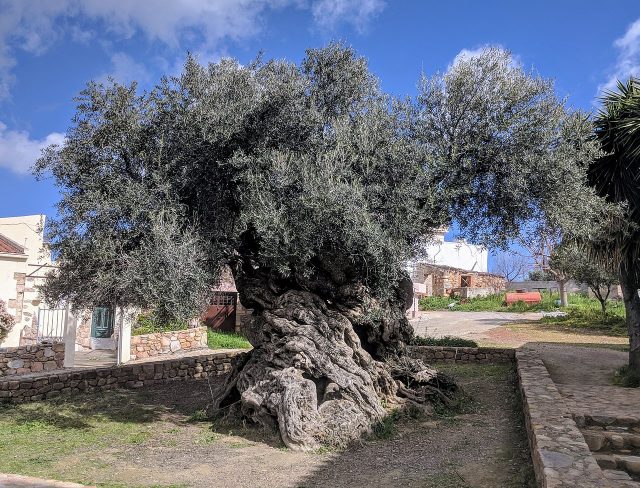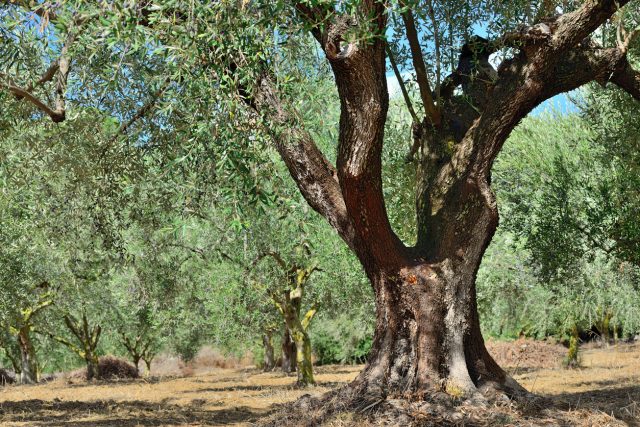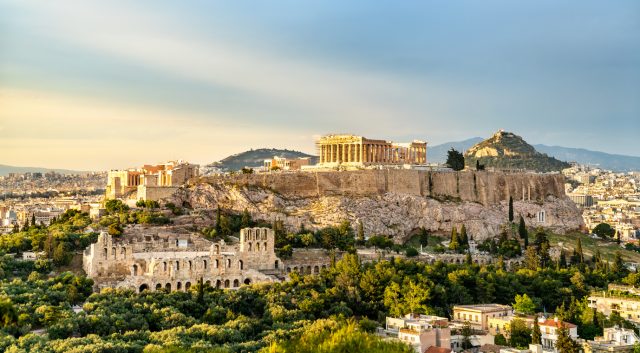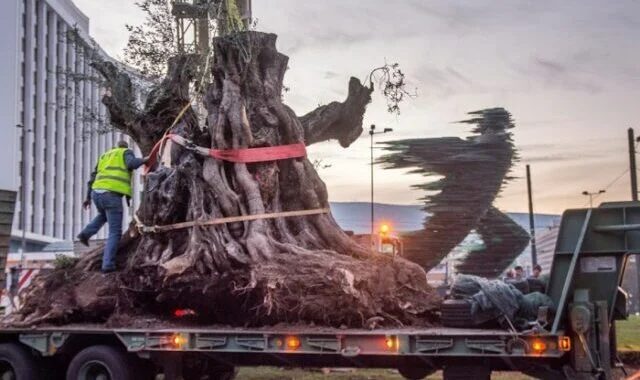A Greek train company are going off track to rescue precious olive trees.
The march of progress often impacts on the natural world. But ERGOSE, part of transport operation TRAINOSE in Greece, are doing something to redress the balance as they expand their network.
Starting in 2014, they decided to save this leafy obstacle from construction crews. The easy option would surely be to chop them down. Instead, they painstakingly remove them by the root and replant them elsewhere, away from high speed links.
So far over 500 trees have been spared a felling. Why can’t the company just go in with buzzsaws? Not that they want to, but there’s a fundamental reason it doesn’t happen.

Take the situation in Petroupoli, a suburb in Athens. Speaking to Xinhua, Mayor Stefanos Gabriel Vlachos says residents “welcomed with enthusiasm” the efforts of ERGOSE, who work in partnership with local authorities.
Why are they so happy? Because there is “no person in Greece whose life is not linked to the olive tree and its fruits”.
The Greek Reporter writes the olive tree “symbolizes peace and prosperity, as well as the hope of resurrection and prosperous life.”
Some of these bark-clad treasures are as ancient as the acropolis itself. By preserving the trees, the business giant is ensuring its heritage continues to grow.
Most people have heard of using an olive branch to resolve differences. Greek City Times states the branches are “commonly used as decoration at both Greek weddings and baptisms”. They represent union, fertility and the healing of divisions, on both a personal and international scale.

When a devastating wildfire tore through Attica in 2018, people there needed a vision of hope. When 60 formerly doomed olive trees were replanted in Marathon and Rafina – 2 cities that bore the brunt – it provided a degree of comfort.
Attica carries particular significance for the olive tree. As written on the Olive Oil Source website, the goddess Athena introduced olives to Greece. Why did she do this? Because control of Attica was up for grabs, a tempting prospect indeed offered by the all powerful Zeus. He wanted a top notch invention in return for the prize.
The olive’s versatility swung it for the goddess, whose name inspired capital city Athens. Poseidon reportedly had one impressive horse on standby but Zeus chose the humble fruit and Athena as the victor.
Its oil lights lamps, gives off heat and makes an ingredient in medicine. Speaking of ingredients, people across the globe cook up a storm with the best-selling stuff. Not to mention all the anointing that goes on, for spiritual and other less savory reasons.
Trees began to grow in abundance from approx 3,000 BC. But the very first tree was planted by Athena on a hill. There in Athens is found the world famous acropolis, or ancient citadel.

The Greek City Times mentions further deep rooted connections. Those who know their mythology are aware of Odysseus, Homer’s historical action hero. He had a fight on his hands when he encountered the giant cyclops Polyphemus. And thankfully for him, olive wood was on hand to put the monster’s eye out.
The same material served mighty Hercules well, with his bat being crafted from olive wood according to the Times.
When the Romans forged their empire, olives joined them for the ride. The army raised hell but left behind a tasty treat, and something that changed world culture forever.
Over in the modern day city of Patras to the west, another ancient tree shared a spot with a work site of hard hats and hammers. ERGOSE were on hand to transport the elderly specimen, some 4 centuries old, to a calmer part of the country.
The ERGOSE website writes the trees are being cared for “along the axis of the new railway line, in the Kiato-Patras section and specifically in the greater Aigio area.”
Another Article From Us: A Massive Anglo-Saxon Cemetery and Treasure Trove Has Been Discoverd
It’s good to know a big organization are stopping to think about the environment and the future of the natural world. Transplanting trees is brightening up Greece during a chaotic period for humankind…
